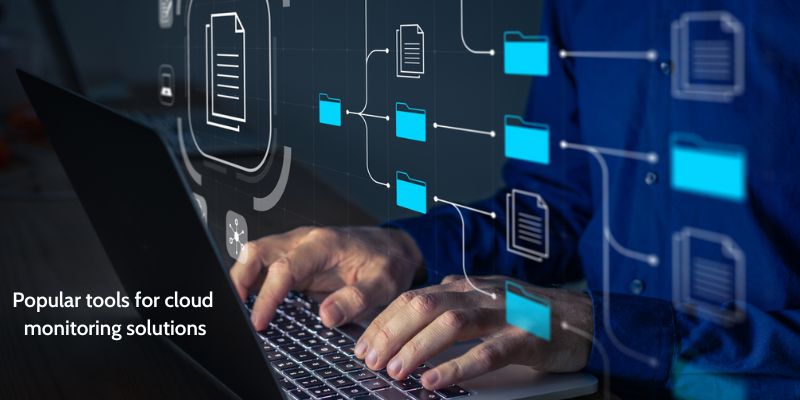The cloud is a global network of servers located in data centers. To save expenses, improve efficacy, and have one less thing to worry about, many businesses chose to migrate their operations to the cloud. The cloud deployment of your operation does not, however, make problems disappear on their own. Since it is still a human-made endeavor, issues will arise. A sequence of analyzing, administering, and monitoring operations known as “cloud monitoring” oversees a cloud process. To confirm a cloud is operating, cloud monitoring solutions might use manual and/or automated monitoring services or technologies. Uncover more information on uley.info
Contents
What is cloud monitoring?
Cloud monitoring includes keeping an eye on and controlling all parts of cloud workflow while utilizing AI and/or manual monitoring techniques to make sure the cloud is functioning properly. You also assess whether its performance complies with specific standards. In order to ensure that:
- By monitoring network activity, logs, files, and users in addition to reviewing security requirements, you can reduce the likelihood of a breach to almost zero.
- Although you can’t build an error-free machine, you can identify defects before your customers or investors do. You can provide better support by keeping track of the overall system health, specific software and hardware features, and performance trends over time.
- If you want to expand, you must be prepared to handle expansion overloads and provide reliable service all around the world. You can get metrics like performance or uptime from monitoring websites and applications, which are useful for future planning.
Monitoring the availability and performance of cloud computing resources and applications is known as cloud monitoring. Data from multiple sources, including logs, apps, and cloud infrastructure must be gathered, examined, and reported on. Cloud monitoring is to give information about the health and performance of cloud-based resources and applications and to spot potential performance issues, security risks, and other issues before they degrade the user experience.

Benefits of cloud monitoring solutions
1. Cloud monitoring systems proactively spot and fix any issues, such as cybersecurity threats, functionality difficulties, and poor performance, that can prohibit your company from providing essential services to your consumers.
2. These solutions can expand with your company because they are cloud-based, making it much easier to scale them across enterprises of various sizes.
3. Service providers assume complete responsibility for upkeep of hardware and specialized tools for cloud monitoring, saving you time and giving you piece of mind.
4. You don’t need to schedule or plan upgrades because cloud monitoring systems are routinely updated automatically.

Popular tools for cloud monitoring solutions

1. Cloud Monitoring Solutions : Middleware
Organizations may monitor the performance and availability of their cloud infrastructure and apps using middleware, a cloud-based monitoring tool. It offers log management, reporting, and real-time monitoring and alarms in addition to integrations with well-known cloud services like Amazon Web Services (AWS), Microsoft Azure, and Google Cloud Platform (GCP).
You can monitor a number of elements in your cloud environment with middleware, such as server performance, network traffic, and database performance. It gives you comprehensive visibility into your cloud architecture and enables you to spot performance hiccups and possible security problems. Additionally, it offers a unified dashboard for simple monitoring and control of your cloud environment as well as comprehensive reporting tools that let you evaluate performance over time and make defensible choices regarding cloud environment optimization.
2. Cloud Monitoring Solutions : Amazon CloudWatch
Amazon Web Services (AWS) provides Amazon CloudWatch as a monitoring tool for its cloud resources and the AWS cloud-based applications. It offers in-depth logging and real-time monitoring of AWS resources like EC2 instances, RDS databases, and S3 storage. Custom metrics and log data can also be gathered by CloudWatch, and automatic actions can be taken in response to preset thresholds or trends in the data.
3. Cloud Monitoring Solutions : Microsoft Azure Monitor
Azure Monitor is Microsoft Azure’s in-built monitoring tool. It helps you understand how your applications are doing and offers alerts and suggestions to maintain the greatest level of availability and performance. Azure Monitor can gather information from a variety of sources, including Azure resources, applications, and logs, and provide you a general picture of the performance and health of your cloud environment.
4. Cloud Monitoring Solutions : Google Cloud Monitoring
You may monitor the performance and well-being of your cloud-based infrastructure and apps using Google Cloud Monitoring, a monitoring service offered by Google Cloud Platform (GCP). It offers in-the-moment monitoring and notifications, thorough performance information, and performance visualizations for your GCP resources.
5. Cloud Monitoring Solutions : Datadog
An analytics and monitoring tool for the cloud, Datadog offers a centralized view of the functionality of cloud-based infrastructure, apps, and services. In addition to integrating with well-known tools like AWS, GCP, and Azure, it offers real-time monitoring and alerting, log management, and reporting. You can keep an eye on the performance of your application by monitoring cloud resources and services with Datadog.
In closing ,Your developers should be concentrating on creating excellent software, not on monitoring. Your staff may concentrate on things that provide value rather than looking for flaws or mistakes in your setup thanks to cloud monitoring tools. The best monitoring tools are now at your disposal, so you can start examining your cloud infrastructure. Select the tool that best satisfies your requirements, then begin creating the ideal environment for your cloud-based activities.


